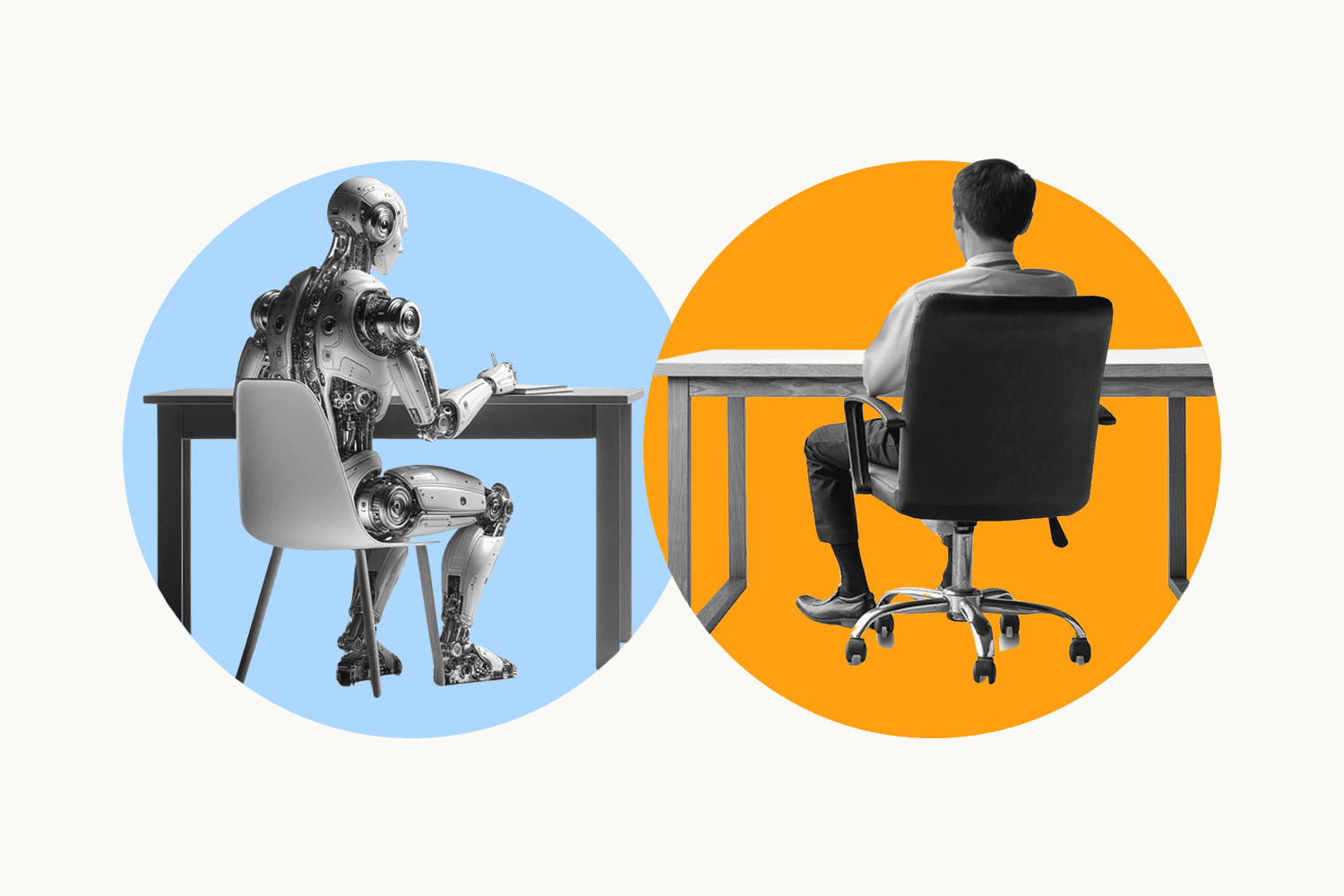Agencies break down how they’ve made ChatGPT and generative AI their own
Billion Dollar Boy, Gut, and Mischief are focused on ensuring that work powered by the tech retains a human touch.

Amelia Kinsinger
• 5 min read
It’s been over a year since ChatGPT first rolled out, and while constantly hearing the phrase “generative AI” has been really a(i)nnoying, there’s no doubt the technology has transformed the world. It was one of the hottest topics at CES earlier this year, and SXSW has a dedicated track for the tech.
When something’s trendy, marketers tend to take notice, and we spoke to execs at several agencies about how they have taken ChatGPT and other generative AI tools into their own hands. They told Marketing Brew that, so far, adland has found unique ways to incorporate generative AI into workflows while working to ensure there is still a human touch, all while tech giants and the federal government alike weigh potential restrictions on the tech.
Lead by example
For independent shop Billion Dollar Boy, generative AI has been useful in influencer marketing. The agency set up Muse, an emerging tech arm to help leverage AI for influencer content creation for clients, Thomas Walters, Billion Dollar Boy’s founder and its European CEO, told us. Muse, which has worked with AI artists like Jo Ann and Elmo Mistiaen on brand campaigns, has also worked with brands including Lipton Iced Tea and Versace, Walters said.
“[It’s] really at the bleeding edge of advertising,” he said.
Internally, the agency is interrogating ways to use AI to optimize work, Walters said. BDB set up a taskforce made up of folks across its departments, from leadership to business affairs, to identify workflow problems and figure out how to solve them using AI tools, Walters said. For example, after realizing the agency’s staff was spending a lot of time manually performing due diligence checks on influencers, the agency created a tool it built using ChatGPT that evaluates influencers’ posts and applies a “risk rating.”
Maxime Rozencwajg, senior account director at BDB, said that the agency spent months experimenting with ChatGPT and other AI with artists and clients. Through its trial-and-error process, the agency and its legal team have built out a framework for AI that aims to “protect our clients as much as possible,” Rozencwajg said. “But we don’t have all the answers yet. No one has.”
History repeats itself?
At independent agency Gut, a generative AI tool built off ChatGPT is being trained to be “promptless,” meaning that the tool can process data to the extent that it can then create new data by combining sources, Christian Pierre, chief intelligence officer and partner at Gut, told Marketing Brew.
What data points could be included in such work? They’re “randomized…[and] based on science and culture and history,” Pierre said. One data point the agency fed into the AI was a project that Gut’s São Paulo office previously worked on with Brazilian tech company QuintoAndar, that was designed to raise awareness of ways to help fight dengue, a viral mosquito-borne illness. This example was fed into Gut’s ChatGPT model, so it could potentially output similar ideas in the future, Pierre said.
Get marketing news you'll actually want to read
Marketing Brew informs marketing pros of the latest on brand strategy, social media, and ad tech via our weekday newsletter, virtual events, marketing conferences, and digital guides.
Gut also trained ChatGPT to cross-reference data with an AI assistant from OpenAI competitor Anthropic, Claude. Gut also utilizes other AI tools, including Bard, Entropy, and Stable Diffusion, Pierre told us.
Besides building promptless AI, Gut is also investing in AI personas. The agency is working on six different personas, which are designed to model people in different life stages and backgrounds, Pierre told us, with the idea that brands can solicit input and advice from the personas based on the demographics the brand is targeting.
“It’s kind of [like] having a focus group on standby,” he said.
Gut requires that all AI-generated content be checked by a human staffer, Pierre said, and before AI is used at the agency, its usage is voted on and agreed upon.
“Generative AI today can solve routine tasks and things like that…but it cannot solve what a human can do: Use that data to do something that will resonate with people,” he said.
Teamwork makes the dream work
Gut isn’t the only agency setting boundaries around AI usage. Independent shop Mischief @ No Fixed Address’s VP of creative technology, Darrin Patey, told Marketing Brew that the agency is already setting boundaries around AI, sometimes with help from other companies: Mischief has been working with companies like Shutterstock on ethical attribution and AI artist compensation.
“They figured out a way to handle attribution and make sure artists are getting some sort of compensation for their work,” he told us.
Mischief has also diversified its use of AI instead of only relying on ChatGPT, employing Waldo and Jasper. While Waldo is a research tool, Jasper can be used to help create social media posts or reformat content, he said. At Mischief, AI is usually only used to generate internal materials, like imagery for a deck, rather than for public-facing content. Human refinement of AI output has become even more critical after Patey said that in some cases, “we were catching made-up attributions.”
“It really puts a huge emphasis on hygiene,” Patey said. “We’re double-checking everything that we see.”
Get marketing news you'll actually want to read
Marketing Brew informs marketing pros of the latest on brand strategy, social media, and ad tech via our weekday newsletter, virtual events, marketing conferences, and digital guides.